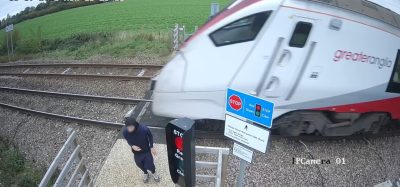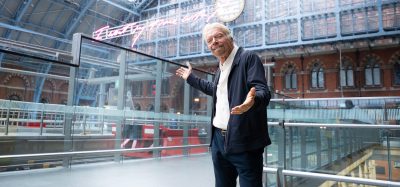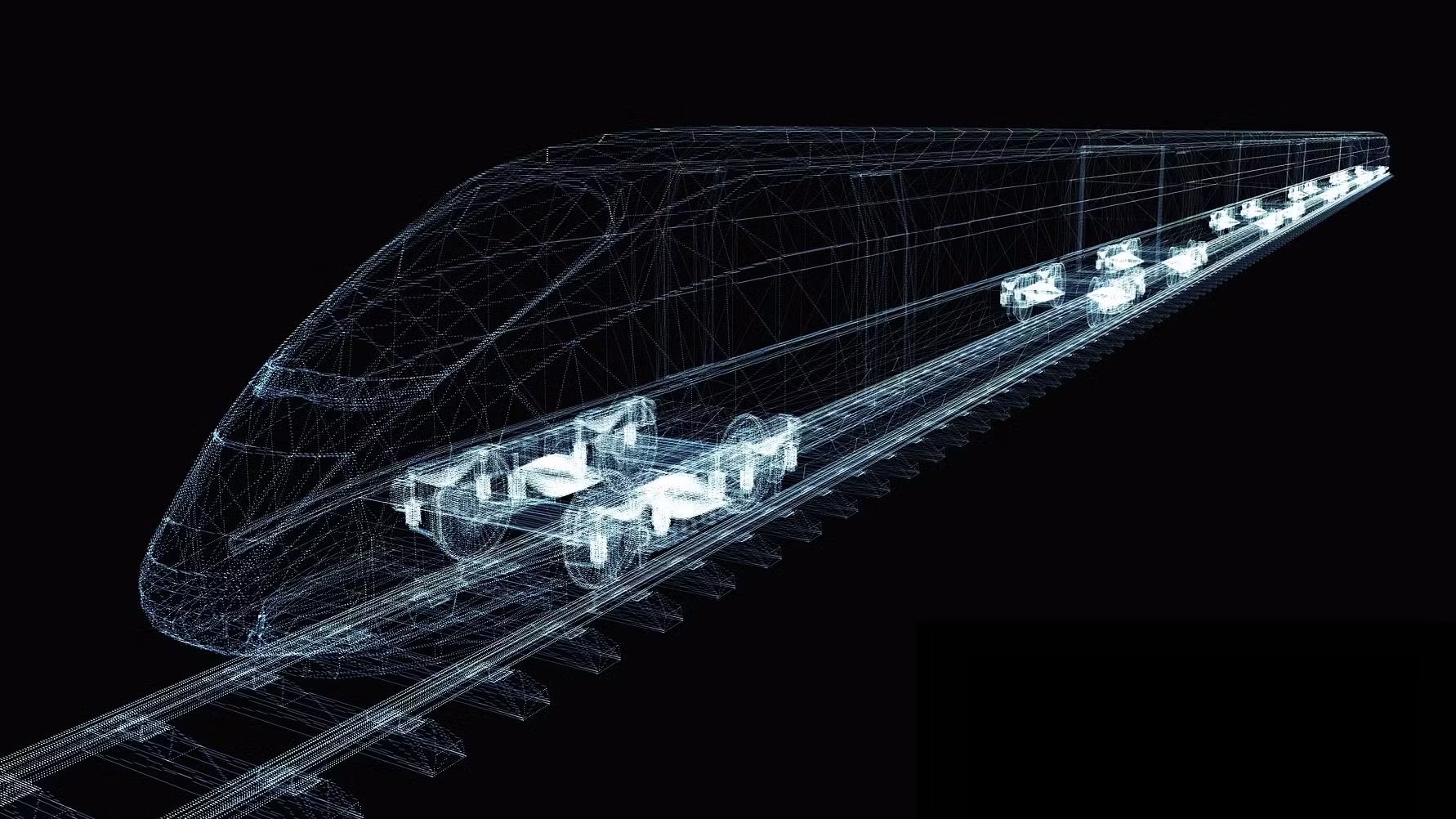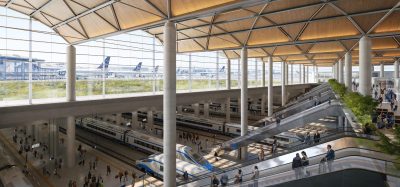Norway outlines plans for one of its biggest ever rail projects
Posted: 15 May 2009 | | No comments yet
In its proposed national transport plan for the period 2010-2019, the Norwegian government has identified construction of a new double-track line between Oslo central station and Ski as a priority. Trude Isaksen discusses the impact of the benefits, opportunities and challenges presented by the project.
In its proposed national transport plan for the period 2010-2019, the Norwegian government has identified construction of a new double-track line between Oslo central station and Ski as a priority. Trude Isaksen discusses the impact of the benefits, opportunities and challenges presented by the project.
In its proposed national transport plan for the period 2010-2019, the Norwegian government has identified construction of a new double-track line between Oslo central station and Ski as a priority. The planned 24km line has been named Follobanen (the Follo line) and up to 19km of it may be in a continuous tunnel. The earliest start date for construction is 2013, and the price is currently estimated at NOK 11.6 billion.
To emphasise the importance of the new line, Prime Minister Jens Stoltenberg travelled by suburban train from Oslo to Ski on 13 April 2009 to announce that the project would be a priority in the transport plan to be unveiled later that day. Mr Stoltenberg was accompanied by Kristin Halvorsen, Minister of Finance, and Liv Signe Navarsete, Minister of Transport and Communications. These three politicians lead the three parties that currently form Norway’s coalition government.
Bottleneck
The new double-track line between Oslo central station and Ski will supplement the existing Østfold line, which is a bottleneck for passenger and freight services approaching Oslo and is already operating at over 100% capacity. Without a new double track, it is impossible to run any more trains on the line than at present. Once this project is completed, all the main lines serving Oslo from the west, north and south will have been expanded to four tracks through construction of new double-track sections and larger stations.
Improved services
The new Follo line will produce improvements to both suburban and regional services, while freight capacity will be several times the current figure. Journey time for the fastest trains between Oslo and Ski will be cut from 22 to 11 minutes. Four-tracking will also facilitate efficient traffic management in the event of disruption.
High capacity
Capacity will more than double, even though the number of tracks is ‘only’ being doubled, because it will be possible to segregate fast through trains from suburban services with frequent stops. This will create capacity for future ridership increases resulting from population and economic growth in this part of Norway. The Follo line will enable rail to handle all traffic growth along this corridor until 2025.
Increased freight traffic
The Follo line will also pave the way for a manifold increase in rail freight traffic. A threefold increase would remove approximately 750 transport trucks a day from the roads.
Increased passenger and freight capacity will help reduce greenhouse gas emissions. One freight train can carry the same amount of goods as 24 fully loaded tractor-trailers.
Jernbaneverket, the Norwegian National Rail Administration, aims to double current rail freight volumes by 2020 and triple them by 2040. With the Østfold line already operating at over 100% capacity, additional freight trains cannot be accommodated without withdrawing some passenger services. Once expansion of the Alnabru freight terminal is complete, the Follo line will have to be operational if Jernbaneverket is to meet its objective of increasing rail freight traffic.
New opportunities
A new double-track line between Oslo and Ski is necessary to improve suburban and regional rail services and international services to Göteborg and continental Europe. Increased capacity and shorter journey times will create new opportunities for residential development and economic growth in the region, while more freight can be switched from road to rail. Suburban trains will continue to use the existing Østfold line, with the new double track reserved for through trains.
No stations
Jernbaneverket has proposed naming the new line ‘Follobanen’, which it is using as a working title at the planning stage. The 1995 plans for the Follo line included stations at Vevelstad and Kolbotn, but Jernbaneverket is now recommending that the line run direct from Oslo to Ski, with no intermediate stops. A new station at Kolbotn serving both the Follo and Østfold lines and meeting current safety standards would cost somewhere between NOK 2.6 million and NOK 3 million. Traffic analysis shows that, overall, this would generate a marginal increase in daily ridership compared with a direct line. The increased ridership from Kolbotn would not offset the high costs of building a new, combined station.
Free up capacity
Even without stations on the Follo line, both Kolbotn and Vevelstad will be able to enjoy a better service on the Østfold line than at present. This is because the Follo line will free up capacity on the Østfold line, making it possible to run more suburban services, which will also benefit other suburban stations. An upgraded station at Kolbotn, designed to accommodate feeder bus services, will be a major ingredient in developing an efficient public transport system extending south from Oslo towards Ski.
Benefits
“A new double-track line from Oslo to Ski will have major benefits for a great many people,” said Anne Kathrine Kalager, Project Manager in Jernbaneverket’s Infrastructure Construction Division. “At the same time, we mustn’t forget that a construction project on such a large scale could potentially have adverse consequences for people, nature and the environment. Good planning is the way to reduce any problems that may occur during construction. We’re studying the potential consequences of various options in order to determine what steps we need to take to produce a piece of infrastructure that’s optimised both for its surroundings and for future rail traffic. It’s important not to leave any stone unturned, so that we can make the right choices.”
Big challenge
“Planning the new Follo line is a big challenge, and there will be a great deal of work over the years ahead,” continued Ms. Kalager. “Through this process, we’ll decide on the alignment of the new tracks, so technical planning has to take place in parallel with the municipal planning process. In 2009, we’ll present a planning programme in consultation with the three local authorities affected by the project. The planning programme will describe the alignment options we intend to consider, and local residents will have the opportunity to express their opinion through consultation sessions at municipal level.”
Many options
In the course of the technical planning process, numerous options and solutions will be examined in parallel with the public planning process. Jernbaneverket continues to work on alignment options for the Follo line, and a variety of ground investigations will take place during the year. These investigations will provide the civil engineers with information on what sort of ground conditions they need to find appropriate solutions for.
Long tunnel
“In the alignment option we’ve been working on, Oslo-Ski is set to have Norway’s longest rail tunnel, at almost 19km,” said Ms. Kalager. “We’ve also been asked to study the scope for brief above-ground sections along the route, so we’re looking at where it might be possible for the line to emerge into daylight. In the case of the tunnel, we have to assess possible locations for access tunnels and construction yards and do more work on the tunnel concept.”
Boring an option
“As for the number of tunnel tubes, we’re considering either one large double-track tunnel, perhaps with a small service and maintenance tunnel alongside, or two single-track tubes. If we choose the latter option, Jernbaneverket will consider both boring and blasting, whereas boring looks unlikely to be a viable solution for the single large tunnel option,” explained Ms. Kalager.
The construction time will depend on various factors, including the number of access points for tunnel excavation.
Optimum construction time
“We’re working on the basis of an optimum construction time for the project – one that gives the best possible balance between costs and progress,” said Ms. Kalager. “We’ve assumed there will be 12 access points in total if we blast the tunnel; while there may be fewer if we bore it.”
North of Ski station, the draft solution incorporates a ‘grade-separated’ junction, known as a high-capacity crossover, between the Østfold and Follo lines. This will allow trains from the Østfold East line, for instance, to cross over to the Follo line without disrupting traffic in the opposite direction. A solution of this kind will facilitate flexible interaction between the old and new lines.
Complex approach
“However, the most complex engineering task is likely to be the approach to Oslo central station,” said Ms. Kalager. “Routing two new tracks into the station is an extremely complicated piece of railway engineering. What’s more, the line has to pass through a densely populated neighbourhood rich in cultural heritage, where there are a great many essential factors to consider.”
Higher speeds
Operating speed on the Follo line is also under consideration. The alignment meets the requirements for speeds of 200km/h, but increasing this to 250km/h or more is an option.
“Besides track geometry, the tunnel profile will be a major factor in determining how high we can go on line speed,” explained Ms. Kalager. “The higher the speed, the larger the tunnel profile will have to be to avoid problems such as pressure forces. We’re currently examining the benefits and consequences of 250km/h or more.”
Ski station
In principle, Ski station is almost ready for construction to start, but Jernbaneverket wishes to finalise the interface between the new double track and the station before work gets fully under way.
“We’re assessing whether we can get started earlier on some individual measures at Ski,” said Ms. Kalager. “For instance, we’re looking into the possibility of installing turnbacks for NSB’s new EMUs. The new trains should be in service by 2012, by which time the turnbacks ought to be operational. So we envisage initial construction work starting at Ski in 2010 or 2011.”
Global Railway Review Autumn/ Winter Issue 2025
Welcome to 2025’s Autumn/ Winter issue of Global Railway Review!
The dynamism of our sector has never been more apparent, driven by technological leaps, evolving societal demands, and an urgent global imperative for sustainable solutions.
>>> Read the issue in full now! <<<







